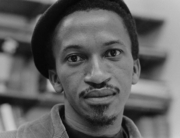If artists are recognized in life, you may assume that their legacy will remain accessible for future generations. In the case of Mexican architect Luis Barragán (1902–1988), winner of the Pritzker Prize (the highest award in architecture), the question of his legacy didn’t become immediately a matter of national interest until after his death.
Barragán’s archive (including more than 13,000 sketches and almost 7,500 photos) belonged to his business partner, Raúl Ferrera. When he died, his enviable inheritance passed down to his widow. She wanted to find a buyer in Mexico who would be interested in keeping the archive in Mexico, but no one answered her call despite its cultural importance. Finally, it was acquired by a New York-based gallery and then sold to a Swiss foundation, the Vitra Design Museum. Federica Zanco, the wife of the foundation’s owner, reportedly received Barragán’s archive as a wedding gift.
Enter Jill Magid, visual artist and director of this documentary, to tell how Barragán’s archive became retained by the Vitra furniture corporation that administers the legacy of the architect as intellectual property restricted to the general public. The Proposal never pretends to be a strict biopic about Barragán or a master class to extol his work, though it presents a proper introduction and the particular characteristic of his designs. (Casa Estudio Barragán and Torres de Satélite are some of the places Magid visits in Mexico City.) The film serves as a culmination of a larger project with a radical purpose. Magid questions the legitimacy of Zanco and Vitras as administrators of a legacy that she feels doesn’t belong to them morally. Reality, performance, and protest amalgamate in a political and artistic gesture that defies notions of patrimony, marketing, and property in the art world.
In a moment of suspense, the only face-to-face meeting between Magid and Zanco inside of a Swiss coffee shop is recorded by a distant hidden camera while the director narrates the conversation. It’s formally an ambush after months of correspondence. It’s not exactly important if Zanco accepts or refuses the director’s unusual and perhaps ghoulish proposal, because the real triumph is how Magid proves a valid point and starts a necessary discussion on the subject of artist legacies, no matter the judgment against or in favor of the moral aspects of her actions. (It’s understandable from a certain point of view, and specifically in a very religious country like Mexico, why Magid’s actions are considered abhorrent to many.)
Magid is fully aware that stories are part truth and part speculation, as she states in her correspondence to Zanco. Her absorbing narration doesn’t make enough room for objections or doubts about her allegedly noble intentions. Yet she has made a highly enjoyable film, and viewers do not need to be familiarized with the architect. What transpires onscreen doesn’t obscure his transcendent work.







Leave A Comment